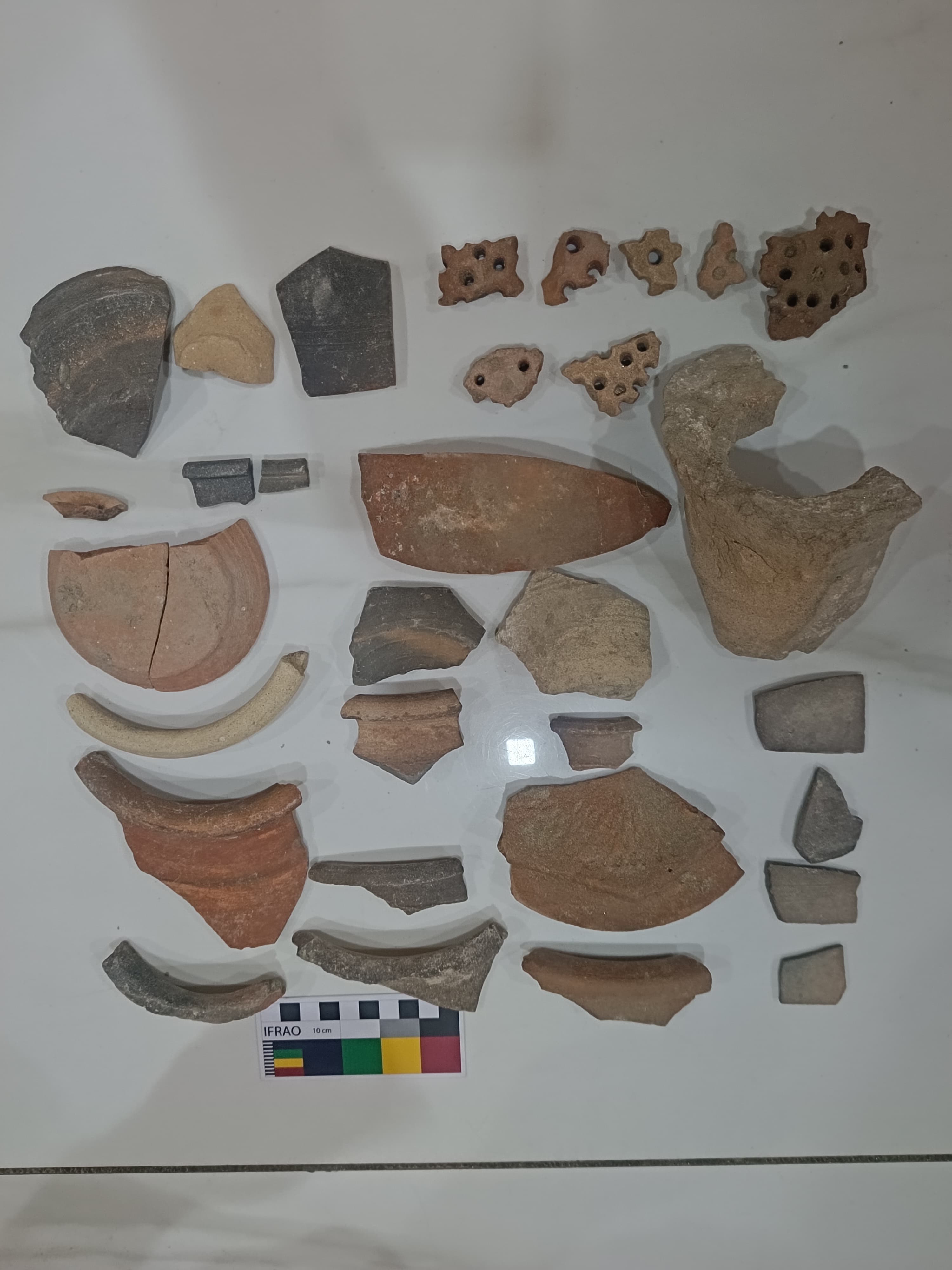
Udaipur / In a major archaeological breakthrough, remains of the Harappan Civilization—dating back nearly 4500 years—have been discovered in the Jaisalmer district of western Rajasthan. The site, known as “Ratadiya Ri Dheri,” is located approximately 60 km from Ramgarh tehsil and 17 km northwest of Sadevala.
This significant discovery was made by a research team comprising Dileep Kumar Saini (Research Scholar, University of Rajasthan), Parth Jagani (Historian, Jaisalmer), Chatar Singh ‘Jam’ (Ramgarh), Prof. Jeevan Singh Kharakwal (Janardan Rai Nagar Rajasthan Vidyapeeth, Udaipur), Dr. Tamegh Panwar (Assistant Professor, Department of History and Indian Culture, University of Rajasthan), Dr. Ravindra Dewda (Research Assistant, Jaipur), and Pradeep Kumar Garg (Ramgarh).
Congratulating the team, Prof. S.S. Sarangdevot, Vice Chancellor of the Vidyapeeth, stated that this finding is a proud moment for both the institution and the nation. The Vidyapeeth has a rich legacy of uncovering archaeological treasures, including the earlier discovery of Chandravati near Abu Road.
The site is especially noteworthy as it is the first Harappan site discovered in the Thar desert, between northern Rajasthan and Gujarat, near the Pakistan border. The discovery confirms that urban elements of the Harappan civilization had extended deep into Rajasthan’s arid landscape.
Scattered across the site are large quantities of fragmented pottery, including red ware, slipped red ware, bowls, jars, and perforated vessels. Also found were stone blades (8–10 cm) likely made from chert sourced from Rohri, Pakistan, terracotta cakes, grinding stones, clay and shell bangles, and other urban artifacts.
A kiln structure was discovered on the site's southern slope, featuring a central column—similar to kilns found at Kanmer (Gujarat) and Mohenjo-daro. The team also unearthed wedge-shaped bricks, which likely served in constructing circular walls and kilns, along with typical Harappan-style bricks.
This first-of-its-kind Harappan site in the remote sands of the Thar Desert offers valuable insights into how the Indus Valley Civilization adapted to harsh desert environments and how far its cultural and architectural influence reached into Rajasthan.